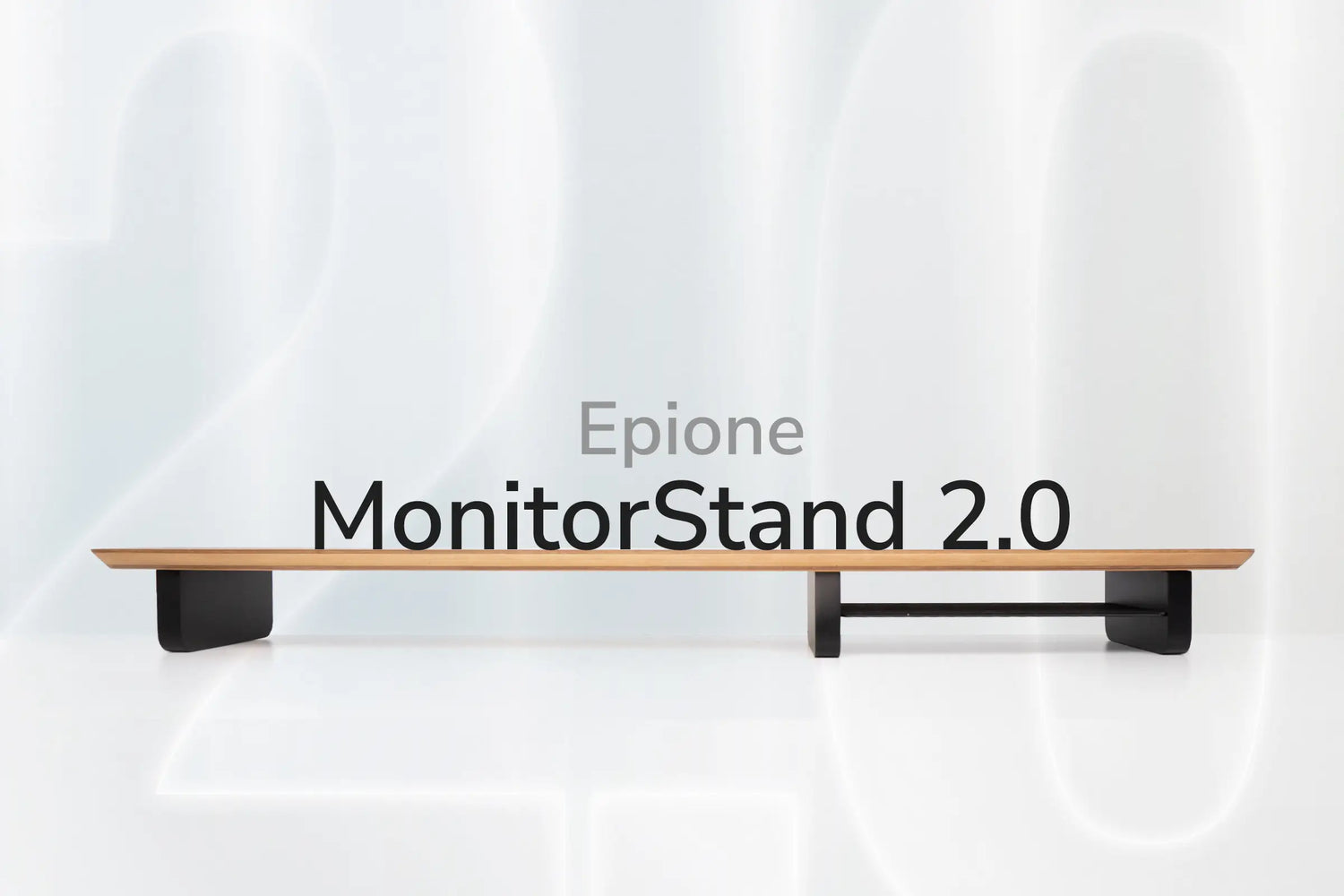Do you find yourself hunching over, burying your face in your screen every day? The dull back pain and stiff neck are constantly haunting you. Don't let bad habits turn your straight back into an obsession called 'office hunchback'. Let's explore with Epione the 3 'saboteurs' of your spine and the secret to help you regain your correct posture.
Placing the screen in an inappropriate position
"For balance, your head needs to be in line with your pelvis," says Kenneth Palmer, MD, an orthopedic surgeon specializing in spine surgery at Houston Methodist. "If your feet and hips are facing the keyboard but your head is tilted slightly to focus on the screen, or if you're constantly tilting your head up and down, you can overwork those muscles—so make sure your screen is at eye level or slightly lower." Personally, I find that simply adjusting your laptop screen to eye level is enough to create a more comfortable sitting position, and less neck strain.

If you use a laptop, buy yourself a laptop stand to raise the screen higher, the best ones are only a few hundred thousand. If you work with a PC, you can invest in a monitor lift to be able to adjust the screen position comfortably, and at the same time have more space to arrange the desk.

If you use two monitors, make sure the main monitor is placed directly in front of you, while the secondary monitor is placed right next to it to avoid excessive neck movement.
Mouse & keyboard above reach
If your keyboard and mouse are too high, you will have to hunch your shoulders and bend your elbows to operate them. These adjustments force your shoulder and arm muscles to work harder, leading to faster muscle fatigue and eventually neck, arm, and/or wrist pain.
You also shouldn’t place your mouse and keyboard at different heights (for example, place the keyboard in the keyboard tray while the mouse rests on the desk), as this will require you to constantly move your arms up and down. These small, repetitive movements put you at higher risk for musculoskeletal injuries.
The keyboard should be about 2 inches from the front edge of the desk, and the mouse should be roughly in line with the keyboard, so that your wrists are in a comfortable position with minimal flexion. If you use the letter keys more than the number pad, the H key should be in line with the middle of your body.

For laptops, it’s best to invest in a separate keyboard and an ergonomic mouse, as a mouse that fits your hand well will help reduce strain and keep your hands in a natural position throughout the day. These two items may seem expensive, but they’ll pay off in many ways: faster, more accurate typing, increased productivity, and better health.

Sitting in the wrong position
Since childhood, our parents have always told us to “sit up straight”. It may sound right, but according to science, sitting up straight at 90 degrees is not optimal. Sitting with a straight back at 90 degrees for a short time may be okay, but sitting for a long time puts a lot of pressure on the spine.
It is actually healthier to sit at a 105-degree angle, even though it may seem a bit lazy and relaxed. Get used to sitting actively by controlling your posture: Straighten your back, align your neck with your spine, lower your shoulders, pull your belly in, and place your feet flat on the floor under your knees. Try to adopt this posture regularly when sitting at work.

In particular, limit sitting with your legs crossed. Women often prefer this sitting position to show politeness and elegance. However, the musculoskeletal system of the human body is inherently symmetrical, especially in the pelvis and legs. When we cross one leg over the other, we unintentionally break this symmetry of the body, which in the long run can cause the pelvis to deviate, varicose veins and increase the risk of osteoarthritis.
Thus, through the small shares above, Epione hopes to help you recognize the seemingly small factors that are silently harming your body with the disease "office hunchback". Follow Epione's series of ergonomic articles so we can give you tips on effective methods to cure this scary disease!






